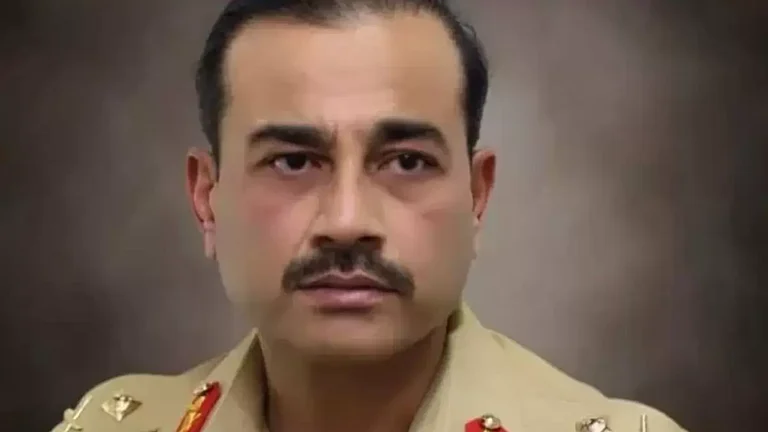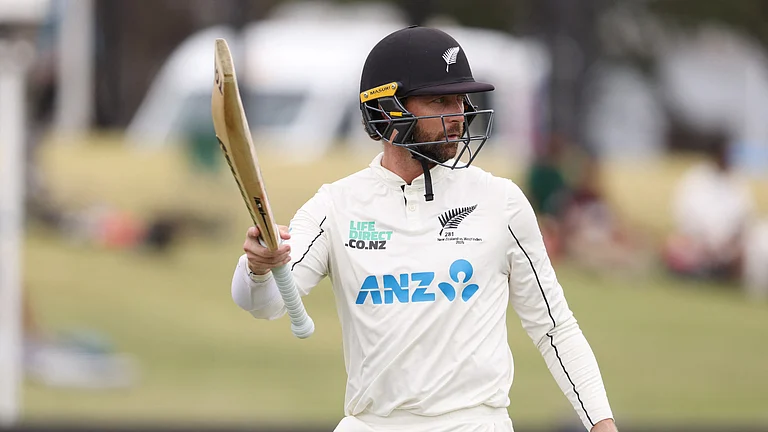“I seek from thee the gift of immortality. I implore thee, grant me eternal life, O Lord.”
Brahma stood silent, for what Hiranyakashipu had demanded could not be granted. The burden of immortality lay heavy on his shoulders. When the universe ends, Brahma dissolves into the abstract immortal Brahman, and a new cosmic cycle begins. Thus, he urged the Asura king to ask for something else. Hiranyakashipu, who had vowed to avenge his brother Hiranyaksha’s death, cracked his knuckles in deep thought.
Hiranyaksha had stolen the Earth and hidden it in the cosmic ocean. Lord Vishnu had then appeared in the form of Varaha, a wild boar. After fighting for a hundred years, as many believe, he slew Hiranyaksha with his tusks.
Hiranyakashipu folded his hands in reverence and asked for a boon that no man or animal could kill him. He further requested that he neither be killed in darkness nor in daylight. Brahma rose his fingers, held them together, and granted his wish.
“Tathasthu.”
This is a recurring theme in Hindu mythology, where Asuras, before being slain by an avatar of Vishnu, were blessed by the gods. The same was true for Hiranyaksha, whose name translates to "golden eyes." He had spent eons in worship before causing tyranny. While the two brothers were born in Satya Yuga, this journey of Asuras continued in Treta Yuga with Raavan.
After receiving the boon, Hiranyakashipu created havoc across the three realms. To add to his fury, his son Prahlad was an ardent worshiper of Vishnu, whom he had vowed to kill. Before matters escalated further, he decided to kill his own son. Holika, his sister who was invulnerable to fire, offered to help when his multiple attempts failed. She took Prahlad in her lap and sat atop a burning pyre. Who could have burned? While Prahlad sat calmly in the breeze of fire, Holika screamed.
How is it that the brother-sister bond is hyphenated in the Asuras? A bond not seen even among the Devas. Take a look at Ravana; to avenge his sister Surpanakha’s insult, he sowed the seeds of his ultimate demise. Consider the fallout of Devaki with Kansa, who many believe was an Asura reborn as a human, after the prophecy of his end. And then we return to what happened to Holika.
Holi, the festival of colors, is preceded by ‘Holika Dahan’ to commemorate the legend of Prahlad because a day later, Vishnu took his fourth avatar as Narasimha. He had a human torso with a lion’s face, breaking the knots that Hiranyakashipu had tied with Brahma. He was neither an animal nor a man. He took Hiranyakashipu to the threshold of his fort (neither indoors nor outdoors), placed him upon his lap (neither on land, water, nor air), and then slew the king with his claws (not with a weapon).
The question that lingered for ages broke with Prahlad: Are all Asuras bad? Not necessarily. Do all Asuras deserve such a demise? Maybe, but mostly yes. The legend continues with Prahlad’s grandson, the righteous king loved by all—Mahabali.
During Mahabali's reign, his kingdom expanded with peace and prosperity, free from poverty, crime, or cruelty. As his fame grew, the Devas became concerned and feared losing their influence. Seeking help, they turned to Lord Vishnu.
Lord Vishnu, taking his first human avatar as a dwarf Brahmin known as Vamana, approached Mahabali. The king kindly asked what the Brahmin desired, and Vamana requested only the amount of land he could cover in three steps. Mahabali agreed, but Vamana then expanded to an enormous size, covering the entire universe with just two steps. Realizing his true identity, Mahabali offered his own head for the final step. Moved by his devotion, Vishnu blessed Mahabali and sent him to Patal, granting him the boon to visit his people once a year. Some even believe he made him the king of Patal lok.
During the ten days of Onam, the people of Kerala eagerly await their beloved king. The tale of Mahabali’s sacrifice is celebrated in the folk song “Maveli nadu vaneedum kalam,” as everyone rejoices in the homecoming of the king.
Does the trail of killing end here? Not so soon. Hiranyakashipu, the great-grandfather of Mahabali, was reborn as Raavan. Accompanying him was Hiranyaksha as Kumbhakarna. Ravana’s wisdom, along with his sins, brought him to the threshold of life. While he stood on the battlefield, betrayed by his own brother Vibhishana, he counted his last moments.
“I chose what is right,” Vibhishana would have argued.
But who decides what is right? Ram, while on the battlefield, called Ravana ‘Jaya’—only to make him realise who he was. Sins were destined before his birth. Fate was already riddled with death.
“This is not your first time,” he heard Ram say without moving his lips.
Jaya and Vijaya served as the gatekeepers of Vaikuntha, the abode of Vishnu. Immersed in pride, they were cursed by the four Kumaras to be born as mortals multiple times and killed by the different avatars of Vishnu. They incarnated as Hiranyakashipu and Hiranyaksha in Satya Yuga, then again as Ravana and Kumbhakarna in Treta Yuga. Their journey would meet ultimate salvation when they succumbed to the hands of Krishna as Shishupala and Dantavakra in Dvapara Yuga.
Vishnu’s triumph should be revered, not only because of the ‘Kalyan’, but also for the ‘Asura’ in making. It is a believed norm that we have entered Kalyug Yuga. Waiting for what is considered the last avatar, Kalki, it is essential to figure out who is Asura amongst us all.





























